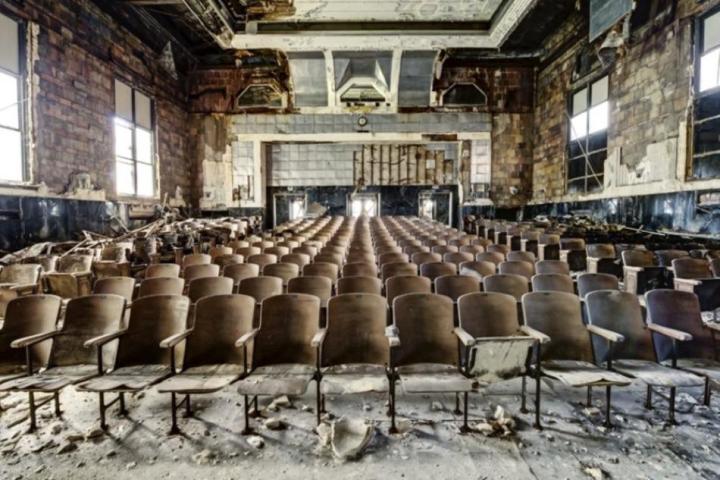
“If America is the Roman Empire of our time, then New York City is Rome. The pulsating heart of the West pumps greenbacks through the veins of Manhattan, the richest place in the world. Power emanates from its corporate brains and financial muscle across the whole surface of the globe. So how is it that even in the body of America, land of eternal youth, there is failure, death and decay hidden just beneath its glossy surfaces?”
So reads the description for States of Decay, a recently released and hardcover-bound 160-page extended photo essay featuring the photography of urban adventurers who captured the imagery throughout the Northeastern United States, offering a look inside generally off-limits but long-since-abandoned locales like hospitals, asylums, schools, and cathedrals.
And if that description should clue the reader into anything, it is that editors/photographers Daniel Barter and Daniel Marbaix intend the book’s title – States of Decay – to carry two meanings, serving as both a reflection of the pictured facilities’ general state of disrepair and the connection the book attempts to draw to what those abandoned structures say about the state of the country.
But to say the book is reaching for its message is an understatement. And its failures start with the imagery itself.
While the photographs are appropriately bleak and beautifully shot, the lack of variation in the style of the photographs already starts to feel mundane by the end of the first quarter of the book – States of Decay is divided into four sections, with text attempting to add context to urban exploration and the book’s forced message. And the photos lack a certain depth, so viewers won’t feel the desire to sit and look for every small detail in a photo, though most of the detail is usually the same peeling paint and rust.
But the bigger problem lies in the book’s political message, which – despite its description as a “visual poem” that allows readers to draw their own conclusions from the images – pushes readers toward a particular way of thinking when drawing parallels to the fall of Rome and generally taking a harsh stance against wealth, in and of itself, almost drawing a sick pleasure from the demise of the structures its images capture.
The odd thing is that while the photographs spanning from New York City to the country’s Rust Belt include industrial sites like power plants, steel mills, factories, hotels, and blast furnaces, the primary focus of this release from publisher Carpet Bombing Culture is – and the bulk of its imagery comes from – hospitals, asylums, schools and cathedrals. All of which – maybe save for the last, depending on where the skeptical reader’s religious beliefs lie – are institutions that were designed to help people.
These facilities aren’t simply monuments to man, symbols of excessive American opulence and frivolous displays of wealth, but rather institutions – as large, abandoned and degraded as they may be – that were designed with others in mind. So the book’s message seems misguided, or at the very least is using the wrong arguments to make its point. More inexcusable, though, is that States of Decay is a book about photography, the images of which are simply boring.
(Copyright images via Daniel Marbaix and Daniel Barter)


